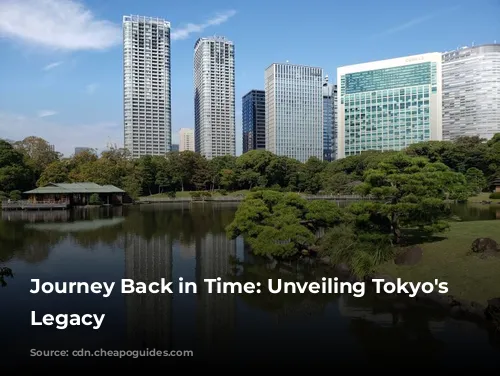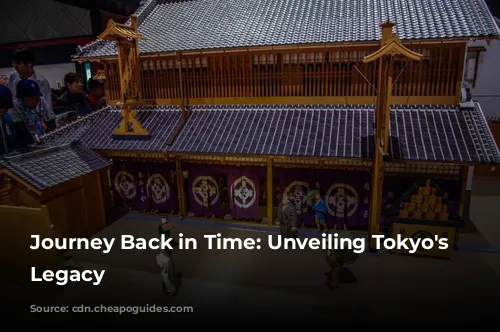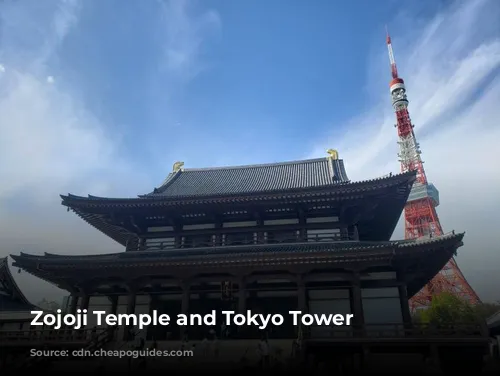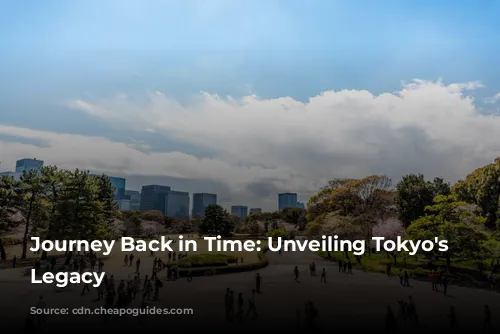Imagine stepping into a world of samurai, geishas, and bustling Edo marketplaces. You can actually experience this captivating past right in the heart of modern Tokyo! While towering skyscrapers and dazzling shopping malls dominate the cityscape, remnants of the Edo period (1603-1868) still linger, waiting to be discovered. This era, a defining period in Japanese history, was characterized by isolation, prosperity, and a flourishing of culture, shaping the country’s identity. Let’s embark on a captivating journey through Tokyo’s five best Edo sightseeing spots, allowing you to delve into the city’s rich history.

The Edo-Tokyo Museum: A Time Machine to Tokyo’s Genesis
The Edo-Tokyo Museum is the ultimate starting point for your Edo exploration. It stands proudly in Ryugoku, its impressive structure resembling an Edo-era storehouse, a beacon for those eager to travel back in time.
The museum masterfully chronicles Tokyo’s evolution, from its humble beginnings to the present day, with the Edo era taking center stage. Immerse yourself in the past through interactive reconstructions, meticulously crafted dioramas, and a treasure trove of original artifacts. Witnessing the vibrant world of Edo Tokyo will captivate your senses and provide a comprehensive understanding of the city’s historical roots.
Don’t fret about language barriers! The museum provides information in both English and Japanese, ensuring a seamless experience for all visitors. Free guided tours offer deeper insights, and the affordable entry fee makes this museum a must-visit for budget-conscious travelers.

Imperial Palace East Gardens: Echoes of Edo Castle
Step onto the grounds of the former Edo Castle, the seat of power for the Tokugawa shogunate, now known as the Imperial Palace East Gardens. While the main palace remains off-limits, the gardens offer a glimpse into the past, inviting you to imagine the grandeur of Edo Castle.
Towering atop the hill, remnants of the main keep stand as silent sentinels, surrounded by expansive lawns. Explore the ruined walls and buildings, remnants of the castle’s mighty past, and let your imagination paint a picture of Edo’s grandeur.
The true highlight, however, is the beautifully landscaped Japanese gardens, designed in the Edo era, a testament to the shogun’s taste. They provide a soothing respite from the bustling city, showcasing how Edo Tokyo’s inhabitants sought tranquility. The wooded Ninomaru Grove area, mimicking a traditional Japanese forest, is particularly enchanting.

Yanaka: A Living Edo District
Yanaka is a haven of old-world charm, a district that has managed to resist the march of modernization and preserve its Edo spirit. Though ox-drawn carts and samurai are a distant memory, the abundance of shrines, narrow alleys, traditional stores, and the atmospheric cemetery evoke a sense of Edo-era life.
While largely residential, Yanaka welcomes visitors with open arms. The tourist information center offers insights into the area, and workshops in traditional Edo pastimes like Kabuki theater and calligraphy provide an interactive way to immerse yourself in the culture.
Yanaka Cemetery, Tokyo’s largest, holds a special place in Edo history. It serves as the final resting place for Tokugawa Yoshinobu, the last shogun, making it the tomb of the Edo era itself. Stroll along the well-maintained paths, especially in spring when the cherry blossoms create a breathtaking spectacle.

Zojoji Temple: A Tokugawa Legacy
Zojoji Temple, established in 1393 as a Jodo Buddhist temple, became a favored place of worship for Tokugawa Ieyasu, who designated it as his family temple. Today, the on-site mausoleum houses the remains of six Tokugawa shoguns, a testament to their power and influence.
Zojoji Temple stands in stark contrast to its modern backdrop, nestled in the shadow of Tokyo Tower, creating a captivating visual tapestry. While most of the temple buildings are reconstructions from the 1970s, the imposing Sangedatsumon, the main gate, is original, dating back to 1622, making it the oldest wooden structure in Tokyo and a marvel of architectural craftsmanship.
In the temple’s cemetery, row upon row of Jizo statues, protectors of children, stand in memory of stillborn and miscarried babies, a poignant reminder of the temple’s spiritual significance.
Hama-Rikyu Gardens: A Tokugawa Oasis
At Hama-Rikyu Gardens, the contrast between Tokyo’s old and new reaches its zenith. Bordering the modern Shiodome district, these serene gardens offer a respite from the city’s hustle and bustle.
The tidal ponds, once used for duck hunting by the Tokugawa clan, have been transformed into a tranquil oasis. Stroll along the pond’s banks and through the grassy meadows, and you’ll understand why the Tokugawas considered this their favorite retreat.
The gardens are especially enchanting in autumn when the foliage explodes in vibrant hues of red, yellow, and gold. This oasis of tranquility is a testament to the enduring charm of Edo Tokyo, a place where the past whispers through the rustling leaves and the gentle breeze.

